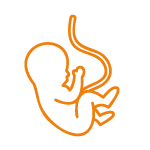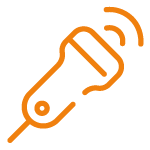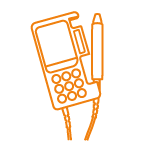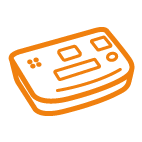Processes
Information on patient education, preparation and implementation of the implantation of a tunneled indwelling catheter and much more.
Processes
Information on patient education, preparation and implementation of the implantation of a tunneled indwelling catheter and much more.
1. therapy concept
Our drainage systems are designed for intermittent drainage of recurrent pleural effusion or ascites in hospital, in the clinic or at the patient’s home. A catheter is implanted subcutaneously in the patient in the hospital or clinic. With this catheter and the prescribed drainage sets, the patient can drain the effusion easily, safely and as required at home or in the nursing home with the support of relatives or nursing staff.
The drains lead to an improved quality of life and mobility through efficient symptom control.
2. education for your patients
We provide you with a number of documents to provide the patient with comprehensive information prior to implantation:
- Patient information brochure
- Information form regarding the risks of the procedure
- Medical prescription for the drainage sets and instruction by ewimed Switzerland AG at home.
3. coding example
Proposals for billing implantation with a short inpatient stay (DRG) or outpatient (Tarmed).
4. products for implantation and drainage
Depending on the medical indication, there are different drainage sets for connection to the catheter. You can get a quick overview of these and other accessories for use in hospitals and clinics here.
5. implantation steps
Implantation of the catheter is a minimally invasive procedure. The catheter can be implanted on an outpatient basis or with a short inpatient stay under local anesthesia, possibly with light sedation. Recurring punctures in hospital, the clinic or at the doctor’s are no longer necessary once the catheter has been inserted. The discomfort associated with fluid accumulation is reduced and makes therapeutic punctures superfluous.
Here you will find an overview of the recommended implantation steps of the catheter using the example of a pleural effusion.
6. drainage after implantation and in the department
Depending on the medical indication, there are different drainage sets for connection to the catheter. You can get a quick overview of how to perform temporary drainage or permanent drainage for use in hospitals or clinics here.
7. flushing the catheter
Depending on the viscosity of the pleural effusion or ascites, flushing may be necessary to release an occlusion. Healthcare professionals can flush the catheter after consultation with a doctor.
8. exit management
We would like to ask you to clarify the following points in order to ensure that your patient receives complete care and receives training and drainage material from us to drain the effusions.
9. catheter explantation
If less or no fluid could be drained during the last 3-4 drainages, it is possible that a spontaneous pleurodesis (pleura) has developed or that an effusion is no longer forming due to the therapy and medication. As the attending physician, you can assess whether the catheter can be explanted (removed) using ultrasound or an X-ray, for example.





